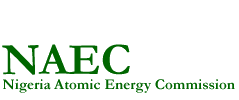History of the Commission
Following the enactment of NAEC Act in 1976, the Federal Government, in 1978 established two university based research and training centres; Centre for Energy Research and Development (CERD) at the Obafemi Awolowo University, then University of Ife, Ile-Ife and Centre for Energy Research and Training (CERT) at the Ahmadu Bello University, Zaria.
These centres have the mandates to conduct researches, develop and train manpower in nuclear technology, engineering and sciences. The Nuclear Technology Centre (SHESTCO) at Sheda, Abuja was established in 1988 as the third training and research centre in nuclear technology. Two centres were also established by NAEC in 2010; these are Centre for nuclear energy studies, University of Portharcourt, and Centre for nuclearenergy training & research, university of maiduguri.
Specifically, the country’s plan is to develop nuclear technology for application in medical and human health, food and agriculture, management of water resources and energy sector among others.
The Federal Government has subsequently endorsed the nuclear roadmap that consists of a three phase technical framework developed by the Commission. That roadmap entails generation of at least 1,000Megawatts of electricity through nuclear power plant by 2017 and increase the capacity to 4,000MWe by 2027.
Goals and Objectives
NAEC’s primary goal entails the provision of the pathway to explore, exploit and harness atomic energy for peaceful applications in the quest for the socio-economic development of Nigeria. This, expectedly, would be done in conformity with the economic policies of the Federal Government. Those objectives that are relevant to the attainment of this goal are listed as follows:
(i) To streamline, harmonise, promote and coordinate research and development activities for capacity building and infrastructure development in nuclear technology.
(ii)To fast-track and catalyse the process of development and deployment of nuclear power plants for electricity generation in Nigeria, in partnership with the private sector.
(iii)To put in place a comprehensive manpower development programme which includes:
(a) Development and introduction of core training programmes in nuclear science and engineering in selected institutions of higher learning in Nigeria to generate the critical mass of the needed manpower for the nuclear industry.
(b) Develop, network and create opportunities for fellowships and advanced training in nuclear science and technology in international organisations and institutions with advanced facilities in other countries with similar objective to use nuclear technology for peaceful applications only. To develop the requisite legal framework for the use of nuclear power plants in Nigeria within a strict regulatory regime as specified by the Nigerian Nuclear Regulatory Authority (NNRA), and in due compliance with the three universal cardinal planks of safety, security and safeguards To liaise with the International Atomic Energy Agency (IAEA), the Preparatory Commission to the Comprehensive Nuclear Test Ban Treaty Organisation (CTBO), other international organisations and countries with similar vision for the implementation of the national programmes.
The Board
The Board of NAEC is headed by the President as the Chairman. Members of the board are the Ministers of Science and Technology, Energy, Defence, Solid Minerals & Steel and Finance. Others include the National Security Adviser, Special Adviser to the President on Energy, a Nuclear Physicist and the Chairman/Chief Executive Officer is the Secretary of the Board.

There are five directorates in the commission. They are the International cooperation and liaison, Manpower training & capacity development, Nuclear Energy Planning, Nuclear Power Plant Development and Research & Infrastructure development.
Other administrative units that make up the office of the Chairman/Chief Executive Officer are Finance and Supply, Public Information, Legal and Library Services, Administration and Internal Audit.
Management
Dr Franklin Erepamo Osaisai, Chairman/Chief Executive Officer of the commission is an accomplished nuclear engineering scientist. He was appointed the pioneer Director General/Chief Executive Officer of the Commission by the Federal Government in April 2006, and was converted to Chairman/Chief Executive Officer in 2011.
Dr. Osaisai, a professional career academic, had before his appointment taught and researched at both the University of California at Berkeley, California, USA and University of Port Harcourt, Nigeria.
The Commission also has six commissioners representing the six geo-political zones namely, Professor Matthew Agu(), Professor S. Pesco Mallam(), Dr. Imoh Obioh(), Professor Mshelia(),
Research Centers
The three nuclear energy research centres currently house various research and development facilities including neutron generators, isotopic neutron sources, X-ray Fluorescence machines, a 30kv miniature nuclear reactor, a 340kCi Co-60 gamma irradiation facility and a 1.7MeV tandem accelerator, which is under construction.
These have collectively contributed significantly in creating and promoting awareness in the peaceful uses of nuclear energy in the country.
Other facilities that have been planned for these centres are 7megawatts multipurpose research reactor at NTC, SHESTCO, Nuclear Materials Laboratory at NTC, Shestco, Thermal Hydraulics and Heat Transfer Laboratory at CERD, Ile-Ife and Health Physics and Neutronics Laboratories at CERT, Zaria.
Back to top | History | Vision | Goals & Objectives | Board | Management |



